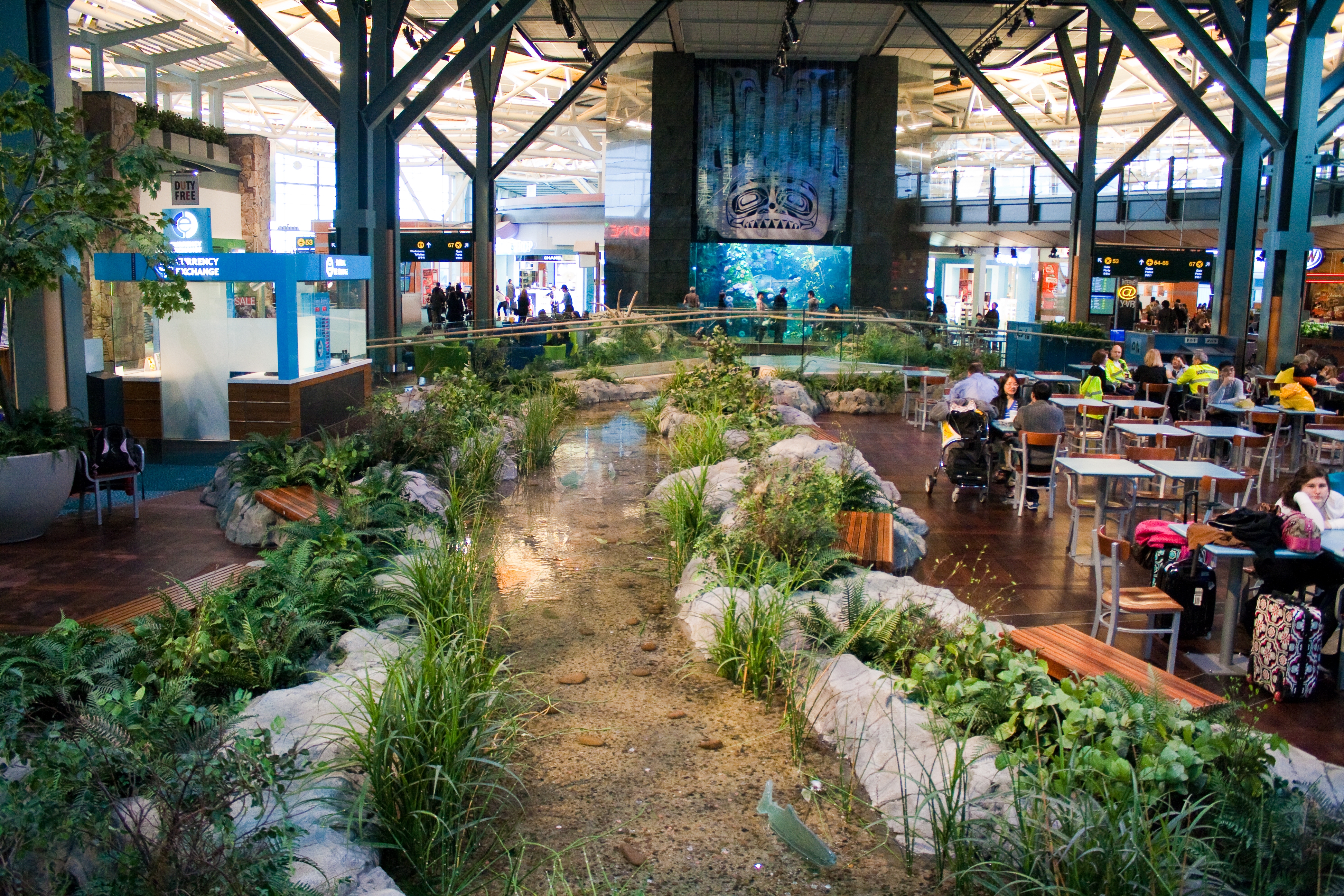18 OCTOBER 2010
YOUR WORDS
Readers are invited to add their comments to any story. Click on the article to see and add.
BTN DISTRIBUTION
BTN also goes out by email every Sunday night at midnight (UK time). To view this edition click here.
- COMMENT - The NBAA starts
- Airbus A380 in Japan
- AlpTransit Gothard tunnel breakthrough
- BAE place two more Avro Business Jets
- British Airways flights to Puerto Rico
- Court says BAA must sell airports
- Eastern Airways adds Sunday service to Cardiff
- Gatwick Airport station refurbishment
- Holiday Inn Express Staten Island opens
- Hong Kong Airlines firms order for A330-200 and A350XWB
- Icelandair to Washington
- IHG signs 4 hotel contracts in Hong Kong
- Japan Airlines introduce the SkyRecliner
- Libyan African Aviation Holdings order CRJ900s
- Network Rail publishes new strategy
- New service from Leeds Bradford
- Rezidor Hotel Group to open another hotel in Dubai
- Savoy Hotel re-opens
- Titan Airways Executive launches with Legacy 650
- UK air traffic down in September
- Virgin America starts Orlando services
- ON TOUR Vancouver International Airport
- HAPPY TALK - More Cabin Crew
The Business Travel News
PO Box 758
Edgware HA8 4QF
United Kingdom
info@btnews.co.uk
© 2022 Business Travel News Ltd.
AlpTransit Gothard tunnel breakthrough
 AlpTransit Gothard has broken though to connect both ends of the longest tunnel rail link in the Swiss Alps. The tunnel is 57km in length and will take another six years to complete.
AlpTransit Gothard has broken though to connect both ends of the longest tunnel rail link in the Swiss Alps. The tunnel is 57km in length and will take another six years to complete.
The first high speed trains should be operational and in use though the tunnel in 2017. The tunnel will have two tracks with multifunctional stations and crossovers under the mountain. www.alptransit.ch www.57km.ch
Court says BAA must sell airports

The Court of Appeal has upheld a decision made by the Competition Commission that BAA Ltd must sell Stansted and either Edinburgh or Glasgow airports within two years.
BAA is now seeking to appeal to the UK’s Supreme Court to get this ruling changed after the company won an appeal last year against the original decision of the Competition Commission. Currently BAA owns six UK airports. www.baa.com
Holiday Inn Express Staten Island opens
 Holiday Inn Express Staten Island has opened; the new hotel is conveniently located between New York’s three main airports, close to the metropolitan centre and to Interstate 95.
Holiday Inn Express Staten Island has opened; the new hotel is conveniently located between New York’s three main airports, close to the metropolitan centre and to Interstate 95.
The 95-room hotel has a 70-seater meeting room, business and fitness centres. www.ihg.com
IHG signs 4 hotel contracts in Hong Kong
 InterContinental Hotel Group (IHG) has signed four hotel contracts in Hong Kong. The contracts are for expansion in Taipei, Hong Kong and Xiamen and will add 700 rooms in hotels that will open under the Hotel Indigo and the Holiday Inn Express brands.
InterContinental Hotel Group (IHG) has signed four hotel contracts in Hong Kong. The contracts are for expansion in Taipei, Hong Kong and Xiamen and will add 700 rooms in hotels that will open under the Hotel Indigo and the Holiday Inn Express brands.
The Hotel Indigo Xiamen has 127 rooms and will open in 2011. The Hotel Indigo Taipei Xinyi has 173 rooms and expects to be open in 2011. The Holiday Inn Express Taipei Xinyi has 125 rooms and expects to be open in 2011 and finally the Holiday Inn Express Hong Kong Mongkok expects to have 300 rooms and to be open in 2014. www.ihg.com
Network Rail publishes new strategy
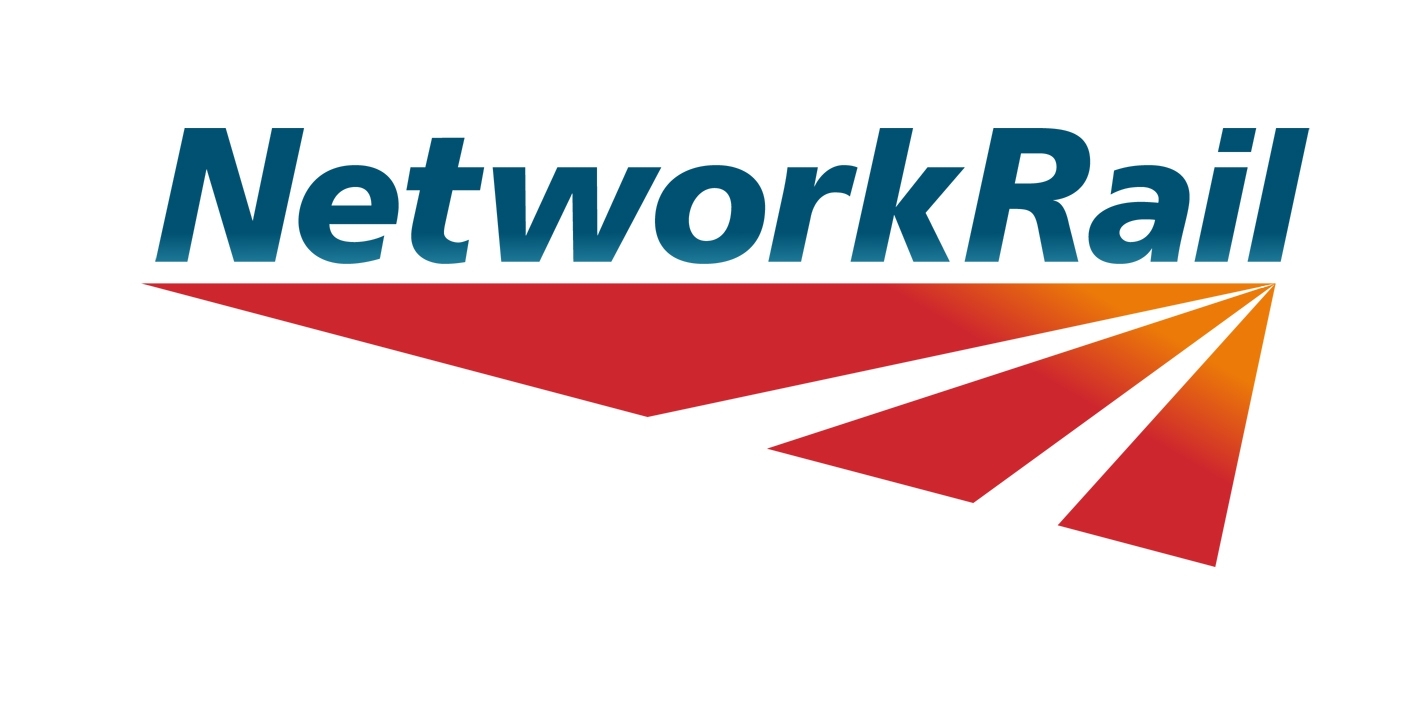
The RUS is now being consulted on and sets out the priorities for the railway in the north over the next 20 years. The strategy includes features such as the Northern Hub and new platforms at Leeds, Huddersfield and Manchester Airport stations.
Comments on the proposals are welcomed and the deadline for responses is the 14 January 2011. Network Rail intends to publish the final RUS next spring. www.networkrail.co.uk
Savoy Hotel re-opens
 The world famous Savoy Hotel re-opened its doors after three years of refurbishment that started in December 2007. The hotel was officially re-opened at 10 minutes past 10 in the morning on 10 October 2010. To date only 55 of the 268 rooms have been re-opened so far.
The world famous Savoy Hotel re-opened its doors after three years of refurbishment that started in December 2007. The hotel was officially re-opened at 10 minutes past 10 in the morning on 10 October 2010. To date only 55 of the 268 rooms have been re-opened so far.
During the refurbishment the hotel has added a new two-bedroom Royal Suite.
The hotel retains features such as the Thames Foyer complete with grand piano, the American Bar and the Savoy Grill. As part of the refurbishment the River Restaurant has been completely remodelled. www.the-savoy.com
Virgin America starts Orlando services
 Virgin America has started scheduled passenger services on 13 October 2010 to Orlando from both Los Angeles and San Francisco. The services will be operated by Airbus A320s. Launched in 2007 Virgin America now has a fleet of 29 A320s and has an outstanding order for a further 40 aircraft.
Virgin America has started scheduled passenger services on 13 October 2010 to Orlando from both Los Angeles and San Francisco. The services will be operated by Airbus A320s. Launched in 2007 Virgin America now has a fleet of 29 A320s and has an outstanding order for a further 40 aircraft.
The airline plans to start passenger services into Dallas Fort Worth and Los Cabos in December 2010 and into Cancun in January 2011. www.virginamerica.com
COMMENT - The NBAA starts
Over the next four days all the business jet manufacturers will gather in Atlanta, Georgia for this year's National Business Aviation Association convention. The convention will have a number of issues to discuss and aircraft manufacturers will showcase and launch a number of new aircraft designs as well as new interiors and modern technology that today's business jet aircraft need to compete in a tough marketplace. AERBT looks forward in reporting some of the news that comes from the show.
Terry Spruce, Guest Editor
BAE place two more Avro Business Jets
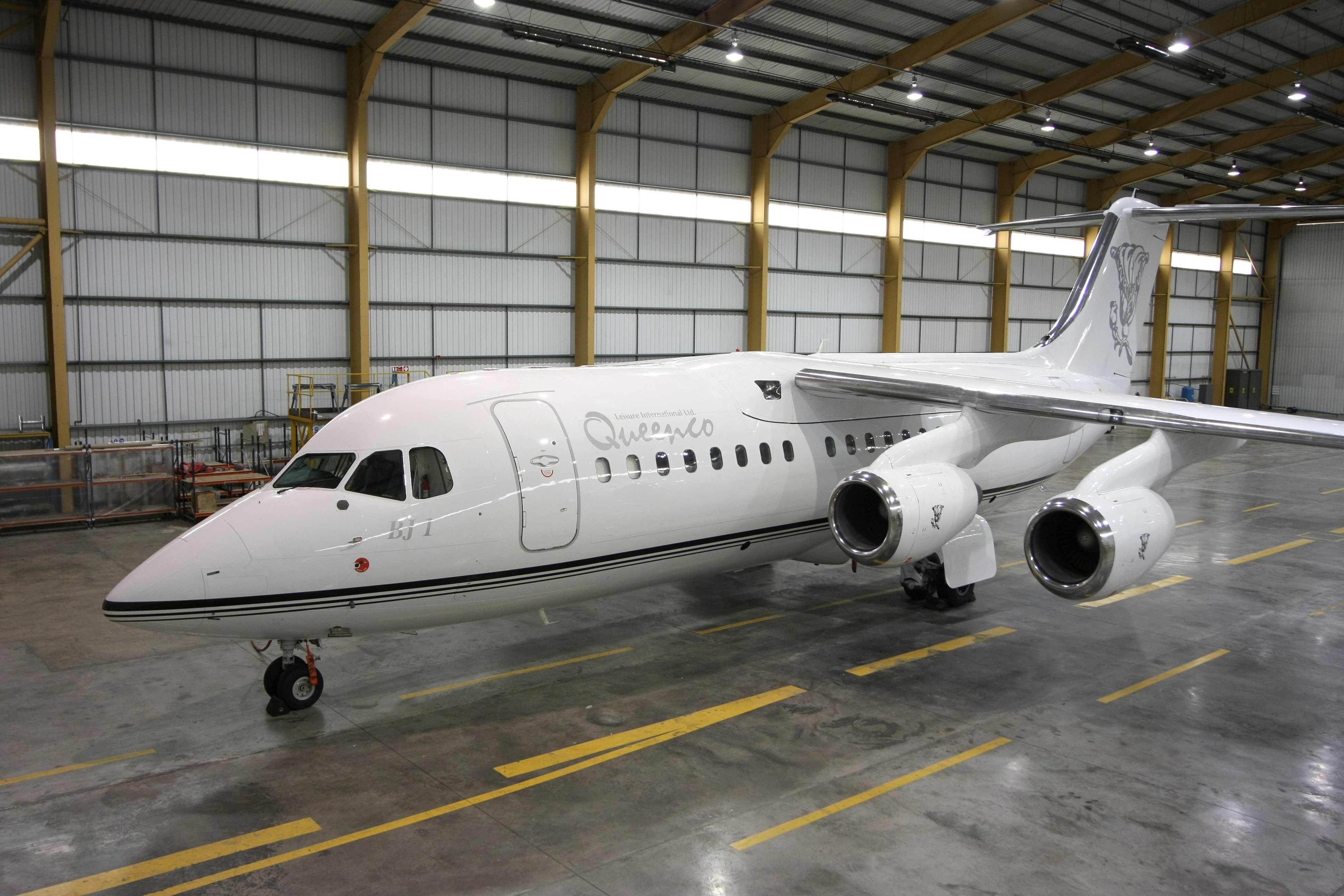
Eastern Airways adds Sunday service to Cardiff
 Eastern Airways has added a Sunday service to their Newcastle to Cardiff route. The new service will start on 31 October 2010. Eastern Airways has been operating two flights each weekday since 2006.
Eastern Airways has added a Sunday service to their Newcastle to Cardiff route. The new service will start on 31 October 2010. Eastern Airways has been operating two flights each weekday since 2006.
Passengers flying from Newcastle can use the dedicated fast-track security channel to avoid any queues at the security search. www.easternairways.com
Hong Kong Airlines firms order for A330-200 and A350XWB
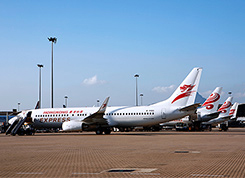 Hong Kong Airlines has finalised a contract for the firm order of ten more Airbus A330-200s and has converted an existing order for A330s to a new order for the A350XWB. Deliveries of these A330-200s will begin in 2012 and the A350XWB will join the fleet in 2018. The aircraft will operate on long haul routes from Hong Kong to Europe and America.
Hong Kong Airlines has finalised a contract for the firm order of ten more Airbus A330-200s and has converted an existing order for A330s to a new order for the A350XWB. Deliveries of these A330-200s will begin in 2012 and the A350XWB will join the fleet in 2018. The aircraft will operate on long haul routes from Hong Kong to Europe and America.
Currently, Hong Kong Airlines has orders for 33 wide-bodied and 30 single aisle aircraft from Airbus. www.hkairlines.com
Japan Airlines introduce the SkyRecliner
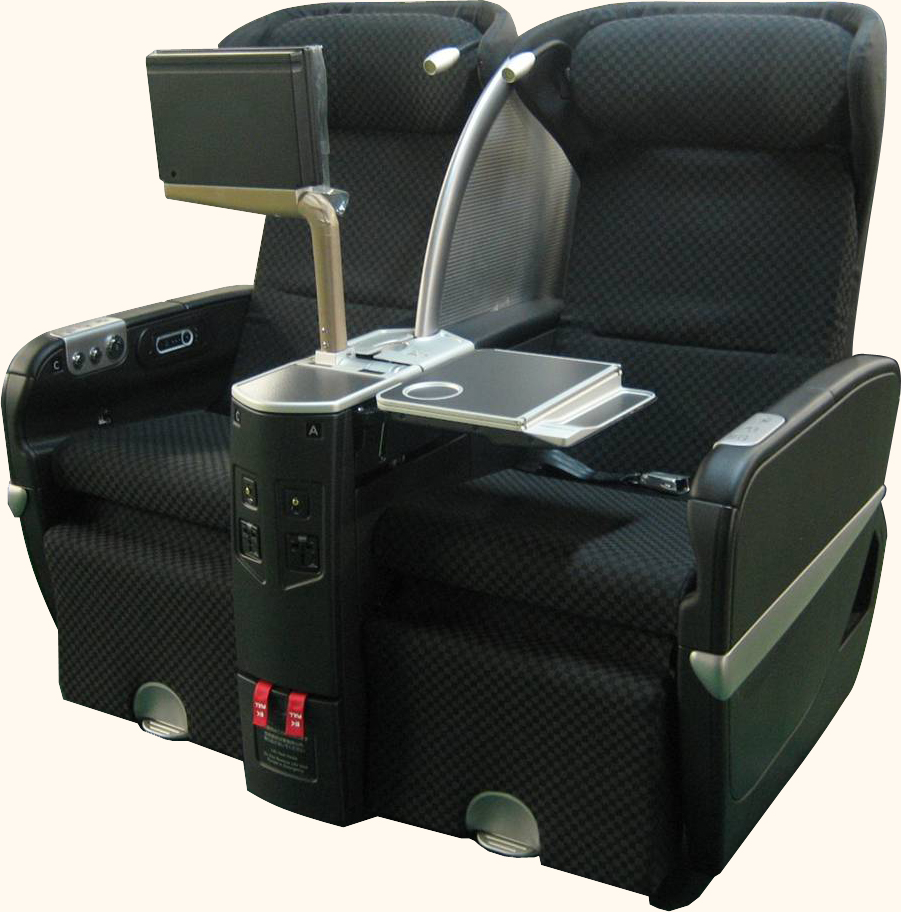 Japan Airlines will introduce a new international executive class seat – the JAL SkyRecliner when the airline receives the first of four new Boeing 767-300ERs from the manufacturer starting later this month. The aircraft will also be equipped with the most up to date inflight entertainment system MAGIC V which now offers touch screen and compatibility with personal devices.
Japan Airlines will introduce a new international executive class seat – the JAL SkyRecliner when the airline receives the first of four new Boeing 767-300ERs from the manufacturer starting later this month. The aircraft will also be equipped with the most up to date inflight entertainment system MAGIC V which now offers touch screen and compatibility with personal devices.
The SkyRecliner is modelled on the JAL First Class seat and has removable armrests. The seat has a 51 inch pitch and can be reclined to 132 degrees. The seat also has an individual 10.6 inch TV screen with video input, a USB port and electrical power outlet.
The first aircraft equipped with this new executive class seat will fly on the Singapore and Beijing routes starting later this month. www.jal.com
New service from Leeds Bradford
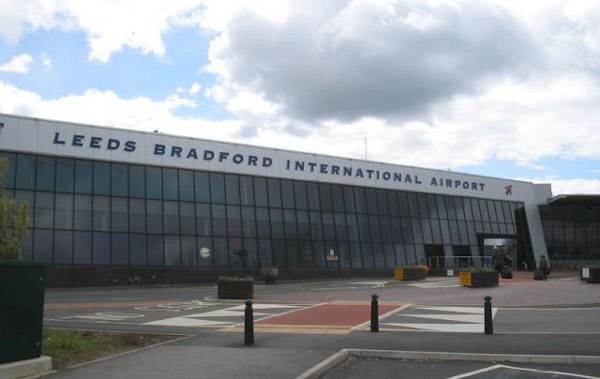 Leeds Bradford International Airport will serve Geneva during the winter ski season, easyJet will operate a five times a week service starting on 17 December 2010 to 24 April 2011.
Leeds Bradford International Airport will serve Geneva during the winter ski season, easyJet will operate a five times a week service starting on 17 December 2010 to 24 April 2011.
The airline expects to carry some 28,000 passengers in the first year and is set to become the largest low cost airline to operate flights to Geneva from Leeds Bradford International Airport. www.leedsbradfordairport.co.uk www.easyjet.com
Titan Airways Executive launches with Legacy 650
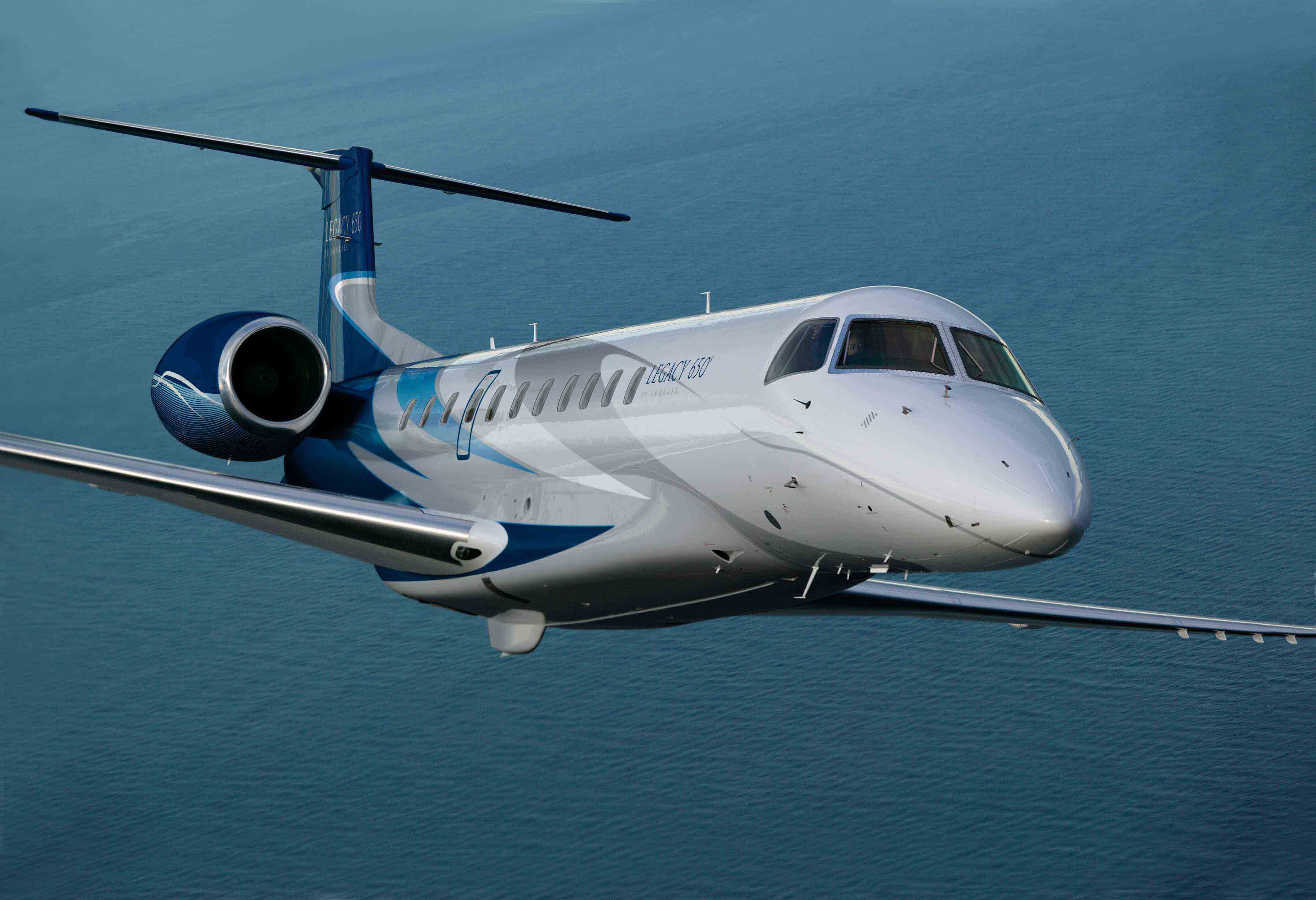 Titan Airways is completing final arrangements to launch a new brand Titan Airways Executive. The new brand will come on line when Titan Airways Executive takes delivery of a newly built Embraer Legacy 650 business jet direct from the Brazilian manufacturers. The Legacy 650 will join Titan’s Beech King Air 350 and 44-seat Boeing 737-300.
Titan Airways is completing final arrangements to launch a new brand Titan Airways Executive. The new brand will come on line when Titan Airways Executive takes delivery of a newly built Embraer Legacy 650 business jet direct from the Brazilian manufacturers. The Legacy 650 will join Titan’s Beech King Air 350 and 44-seat Boeing 737-300.
The Legacy 650 will be based at Stansted and looked after by Inflite at the airport.www.titan-airways.co.uk
ON TOUR Vancouver International Airport
Vancouver International Airport – Gateway to an Emerging Global City
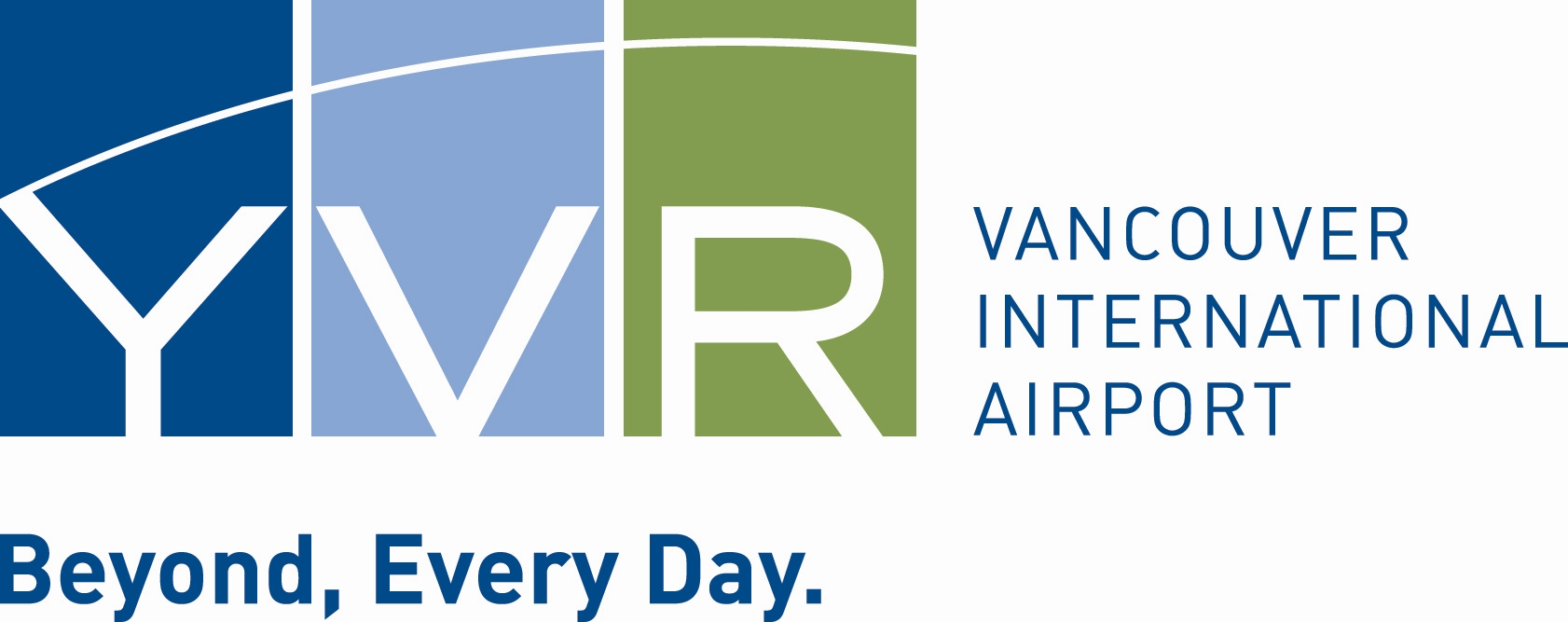
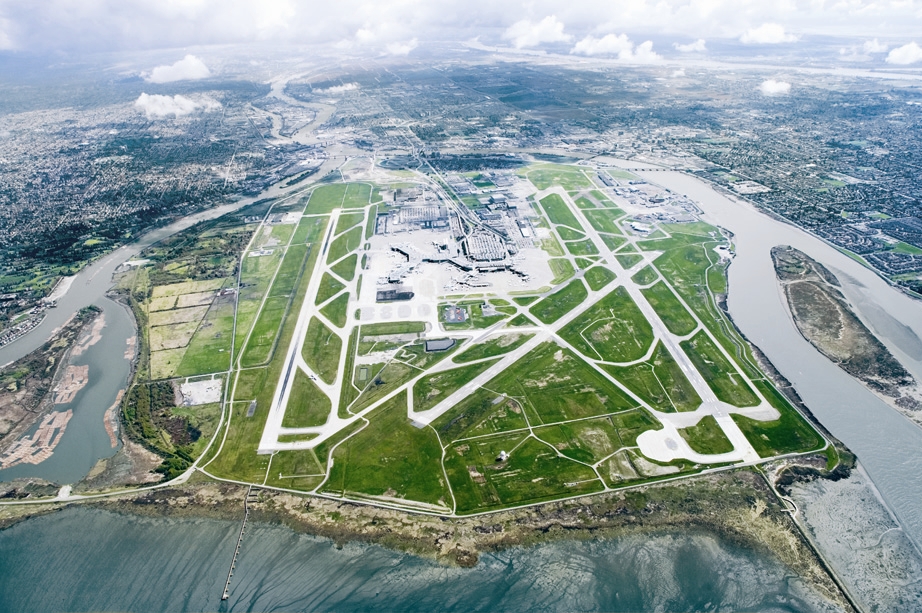
The Masterplan highlights the importance of the Airport to:
- Vancouver’s leading businesses and the wider economy (it is currently estimated to be worth C$6.8bn per annum and provides 2.3% of Greater Vancouver’s employment);
- its rapidly expanding tourism sector, to which the recent Winter Olympics and Canada’s acquisition of ‘Approved Destination’ status from China, is likely to give additional impetus; and
- the ability of the city’s growing and increasingly multi-ethnic population to access other parts of North America and the wider world.
And yet the Airport Authority has not chosen to achieve these strategic objectives by commissioning grand and expensive statement buildings as some other emerging global cities in have sought to do, but has instead focused on:
- high quality and commercially astute incremental development of its Sea Island site
- the export of its highly regarded management and investment expertise to a range of other airports in Canada, the Caribbean and Europe, through its sister company YVRAS dividends from which are ploughed back into improving the capacity, ground access, environment sustainability and corporate and social responsibility commitments at YVR.
The result is an airport that makes-up for what it lacks in size, high flown architectural lines and vaunted ceilings, with:
- an efficient and well designed operational functionality
- coherent and well sign-posted interior design; and
- a pleasing ambience for passengers to relax and spend time in the extensive and attractively presented airside retail facilities.
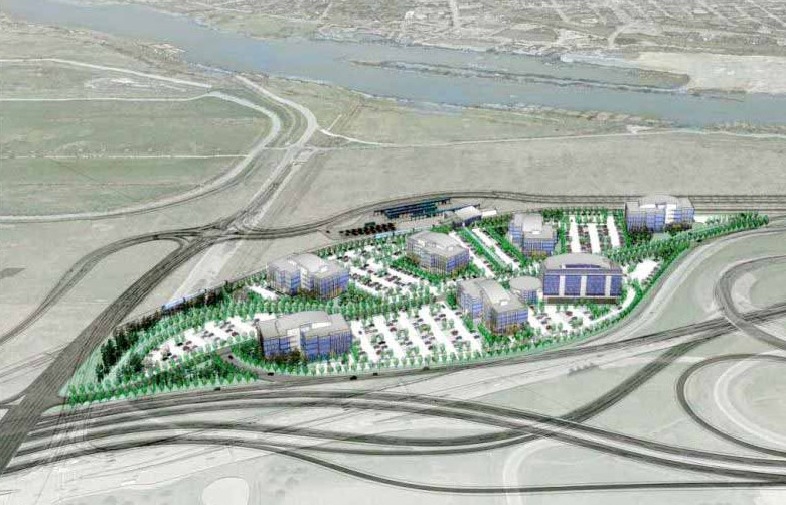
In such a commercially charged environment, the attention given to the exposition of the Airport’s “Earth, Sea and Sky” branding, as expressed in the use of the colour pallet in flooring, glazing and decorative features is extremely effective. However, it is the inclusion of public spaces featuring First Nations art, which demonstrates a laudably far sighted recognition by YVR’s Board and management of the need to create an “sense of place”. This is fundamental to their vision and to securing long term community, investor and political support.
The “Green Wall”, which faces arriving passengers as they head for the new Skytrain Station, the spectacular Sea Life Centre aquarium in international departures, and the striking elliptical Link Building joining the domestic and international terminals could all have been value engineered out of a more prosaic, cost-conscious design. Yet they now stand as testaments to the wisdom that investment in such assets will produce intangible long term benefits to future commercial performance. Combined with the presence of a public park within the airport boundary and an eclectic mix of aircraft, including float planes on the nearby Fraser River and a Canadian Coast Guard Hovercraft, YVR is undoubtedly a unique and distinctive airport.
Tony Gugliotta, SVP of marketing and business development at YVR, is rightly very proud of what has been achieved thus far, but also recognises that if the ambitious plans set out in the ‘Your Airport 2027’ plan are to be achieved, growth will have to come not solely from a rapidly growing population and tourism sector in Vancouver and an increased number of domestic, US city and Central/South American and Caribbean sun routes. The Airport’s will also need to carve out a multi-functional “hub” role, combining:
- A ‘gateway’ for Asia-Pacific originating traffic connect to a wide range of Canada domestic and US West Coast and Mid-West destinations;
- Similarly, European originating North American West Coast bound traffic; and
- Regional local commuter services within BC and on into Alaska.

BC’s Premier Gordon Campbell’s announcement in September of the removal of tax on aviation fuel for international routes, the Airport’s own 5 year incentive scheme and the Canadian Government’s ‘Asia Pacific Gateway and Corridor Programme’ are all signs of a joint commitment to take advantage of YVR’s favourable position on Great Circle routes and its significant Asian population, to make it the premier global gateway of choice linking the Asia-Pacific Region to the Americas. But it faces significant competition in this enterprise from Los Angeles, San Francisco and Seattle and will not be helped by the fact US carriers now have improved bi-laterals allowing them to fly direct to Asia from established bases in the USA, whilst Canada has not liberalised Fifth Freedoms for such routings.
Despite its many successes, which may well attract shareholders of further airports to importing its business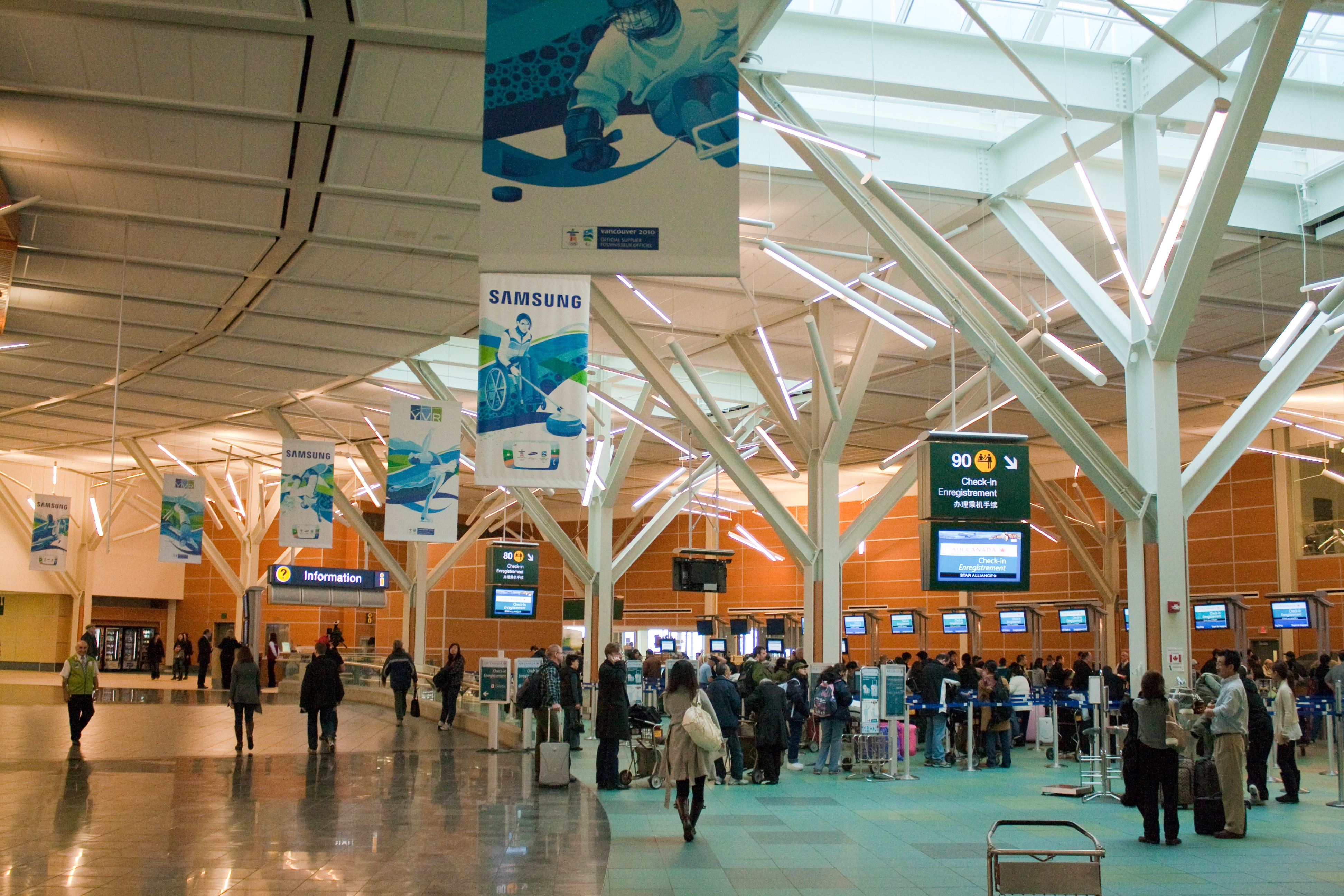
YVR has so far risen admirably to this task and appears well equipped to address the many challenges it faces in an increasingly competitive global marketplace through a combination of far-sighted, imaginative and commercially sound management and a deep commitment to the heritage, environment, community and partners that have created a business model of shrewd investment and stewardship that many others will wish to follow.
Article by Chris Cain
Airbus A380 in Japan
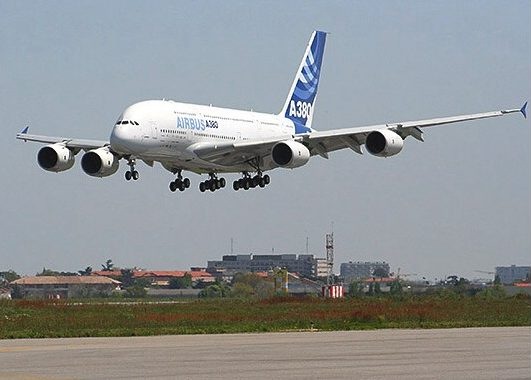 Airbus A380 test aircraft landed at Tokyo Haneda airport on the 15 October becoming the 120th airport able to take the ultra large passenger aircraft. During the visit checks were carried out to confirm that both the airport and aircraft could be handled and operate safely.
Airbus A380 test aircraft landed at Tokyo Haneda airport on the 15 October becoming the 120th airport able to take the ultra large passenger aircraft. During the visit checks were carried out to confirm that both the airport and aircraft could be handled and operate safely.
Later the aircraft was flown to Sapporo New Chitose airport, Hokkaido on another first airport visit, again to check the readiness of the airport for the aircraft. Currently, Air France, Lufthansa and Singapore Airlines fly the A380 into Narita airport. www.airbus.com
British Airways flights to Puerto Rico
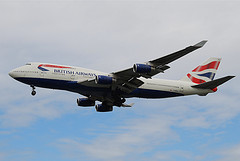 British Airways will begin twice a week flights starting 28 March 2011 from Gatwick to San Juan.
British Airways will begin twice a week flights starting 28 March 2011 from Gatwick to San Juan.
The airline recently announced increases in frequencies to other Caribbean destinations, flights to Barbados from ten to 12 flights a week, Antigua from five to six a week and St Lucia – Port of Spain increasing to daily from five times a week. www.ba.com
Gatwick Airport station refurbishment
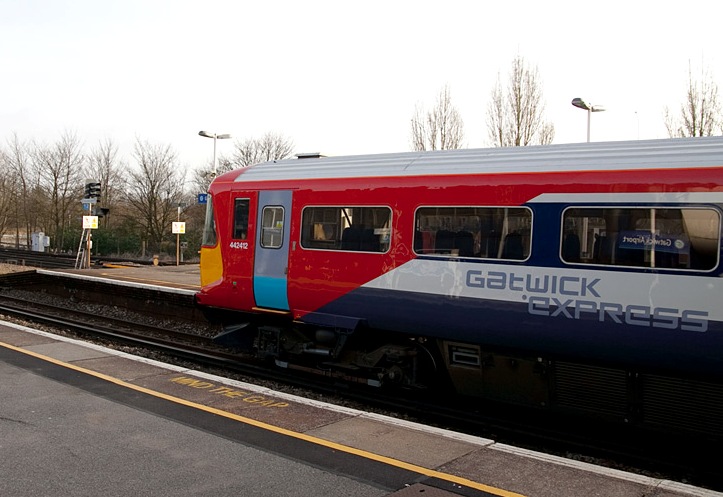 Gatwick Airport railway station is to be refurbished by Network Rail under a programme that will cost £53m. The programme includes a new platform, refurbishing the concourse, upgrading the track and signalling. The work is due to begin in the autumn of 2011 and should be completed by year end 2013 and will be jointly funded by Network Rail and Gatwick Airport. According to Network Rail the airport station was the busiest UK railway station in 2009. www.gatwickairport.com www.networkrail.co.uk
Gatwick Airport railway station is to be refurbished by Network Rail under a programme that will cost £53m. The programme includes a new platform, refurbishing the concourse, upgrading the track and signalling. The work is due to begin in the autumn of 2011 and should be completed by year end 2013 and will be jointly funded by Network Rail and Gatwick Airport. According to Network Rail the airport station was the busiest UK railway station in 2009. www.gatwickairport.com www.networkrail.co.uk
Icelandair to Washington
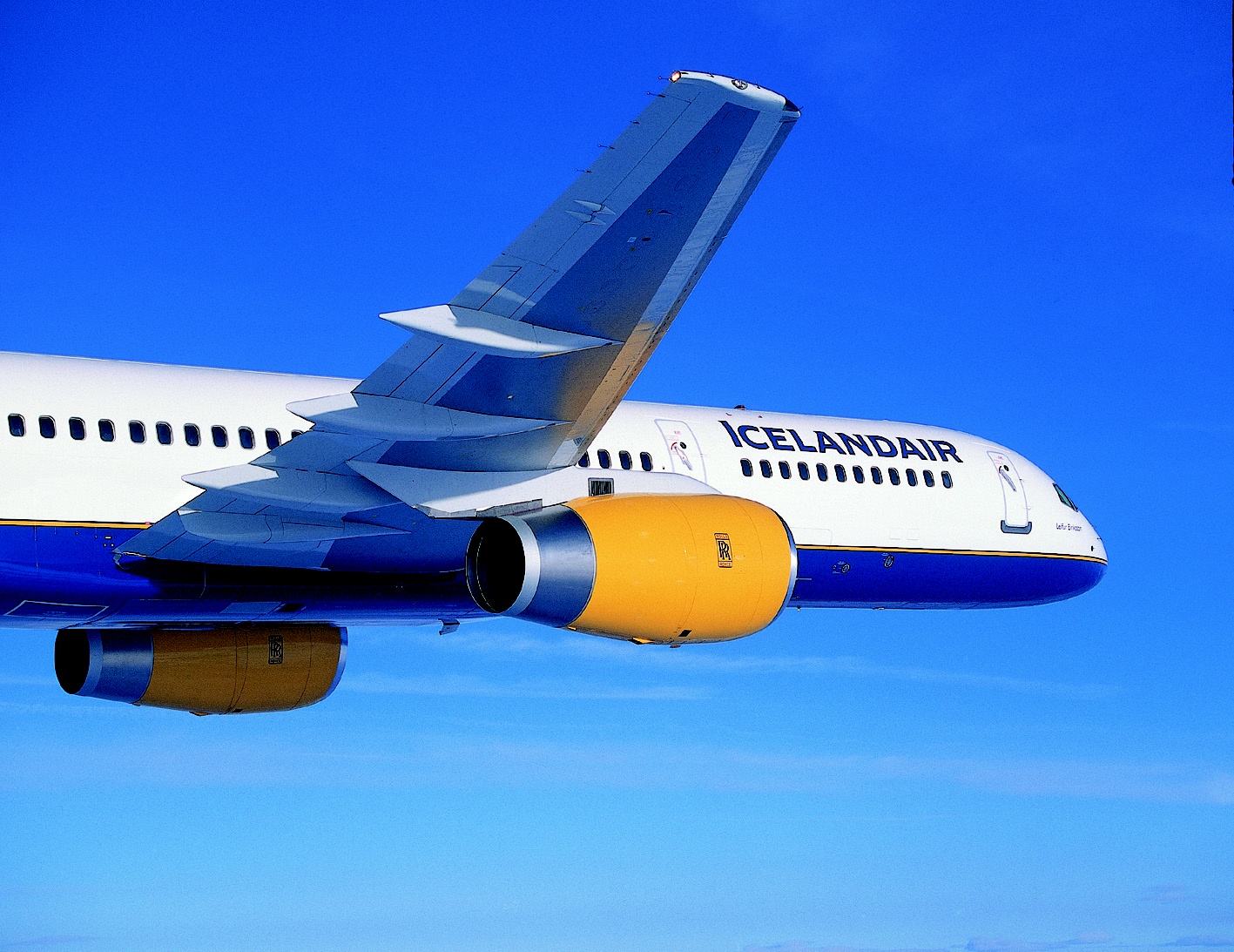 Icelandair is to start passenger services from Heathrow, Manchester and Glasgow airports to Washington Dulles International via Reykjavik from May to September next year. The stopover in Reykjavik will allow passengers to break their journey in Iceland at no extra cost.
Icelandair is to start passenger services from Heathrow, Manchester and Glasgow airports to Washington Dulles International via Reykjavik from May to September next year. The stopover in Reykjavik will allow passengers to break their journey in Iceland at no extra cost.
The route will be flown by Boeing 757.
Washington will be the eighth North American destination in Icelandair’s network. www.icelandair.is
Libyan African Aviation Holdings order CRJ900s
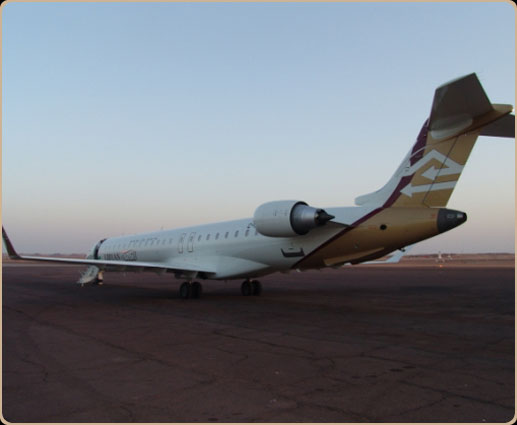 Libyan African Aviation Holdings Company (LAAHC) has signed a firm order for three CRJ900 NextGen and has taken options on a further three CRJ900 NextGen aircraft. The aircraft will be operated by Libyan Arab Airlines, a subsidiary of LAAHC.
Libyan African Aviation Holdings Company (LAAHC) has signed a firm order for three CRJ900 NextGen and has taken options on a further three CRJ900 NextGen aircraft. The aircraft will be operated by Libyan Arab Airlines, a subsidiary of LAAHC.
Based on current list prices, the firm order is valued at US$131.5m and increase to US$267.8m if all the options are converted into firm orders. Libyan Arab Airlines currently operate three CRJ900s and two CRJ900 NextGen aircraft in their fleet. www.bombardier.com www.libyanairlines.aero
Rezidor Hotel Group to open another hotel in Dubai
 The Rezidor Hotel Group will open the Radisson Blu Hotel, Dubai Downtown in early 2011. The new hotel is the 4th Radisson Blu Hotel in the Emirate joining Radisson Blu Hotel at Dubai Deira Creek; Dubai Media City and the Radisson Blu Residence at Dubai Marina. The Dubai Downtown is close to the Dubai Mall and Souk Al Bahar.
The Rezidor Hotel Group will open the Radisson Blu Hotel, Dubai Downtown in early 2011. The new hotel is the 4th Radisson Blu Hotel in the Emirate joining Radisson Blu Hotel at Dubai Deira Creek; Dubai Media City and the Radisson Blu Residence at Dubai Marina. The Dubai Downtown is close to the Dubai Mall and Souk Al Bahar.
The hotel has 198 rooms and 22 suites all with free high speed internet. It also has an all day dining restaurant, speciality restaurant, a pub, two bars that includes a rooftop poolside bar. The hotel also has extensive business centre and meeting facilities. www.rezidor.com
UK air traffic down in September
![]() NATS, the UK air traffic services provider, published figures showing that in September 2010 there was a 0.3% decline in air traffic movement in the country, compared to the same month in 2009. This is the smallest year on year decline since the global aviation downturn began in July 2008.
NATS, the UK air traffic services provider, published figures showing that in September 2010 there was a 0.3% decline in air traffic movement in the country, compared to the same month in 2009. This is the smallest year on year decline since the global aviation downturn began in July 2008.
Air traffic in Europe was effected by two periods of industrial action in France, an air traffic control strike in Belgium and a general strike in Spain during September. There was positive growth in the Transatlantic Arrivals/Departures of 4% and in the Transatlantic Overflights of 6.3%. Traffic at NATS airports decreased by1.3% in the month compared to September 2009.
There were exceptions. Traffic at Farnborough increased by 9.6%, Heathrow by 5%, Southampton by 3.6%, Aberdeen by 0.8% and Bristol by 0.1%. www.nats.co.uk
HAPPY TALK - More Cabin Crew
More from the Cabin Crew
"This aircraft is equipped with a video surveillance system that monitors the cabin during taxiing. Any passengers not remaining in their seats until the aircraft comes to a full and complete stop at the gate will be strip-searched as they leave the aircraft”
and
"Smoking in the lavatories is prohibited. Any person caught smoking in the lavatories will be asked to leave the aircraft immediately.”


